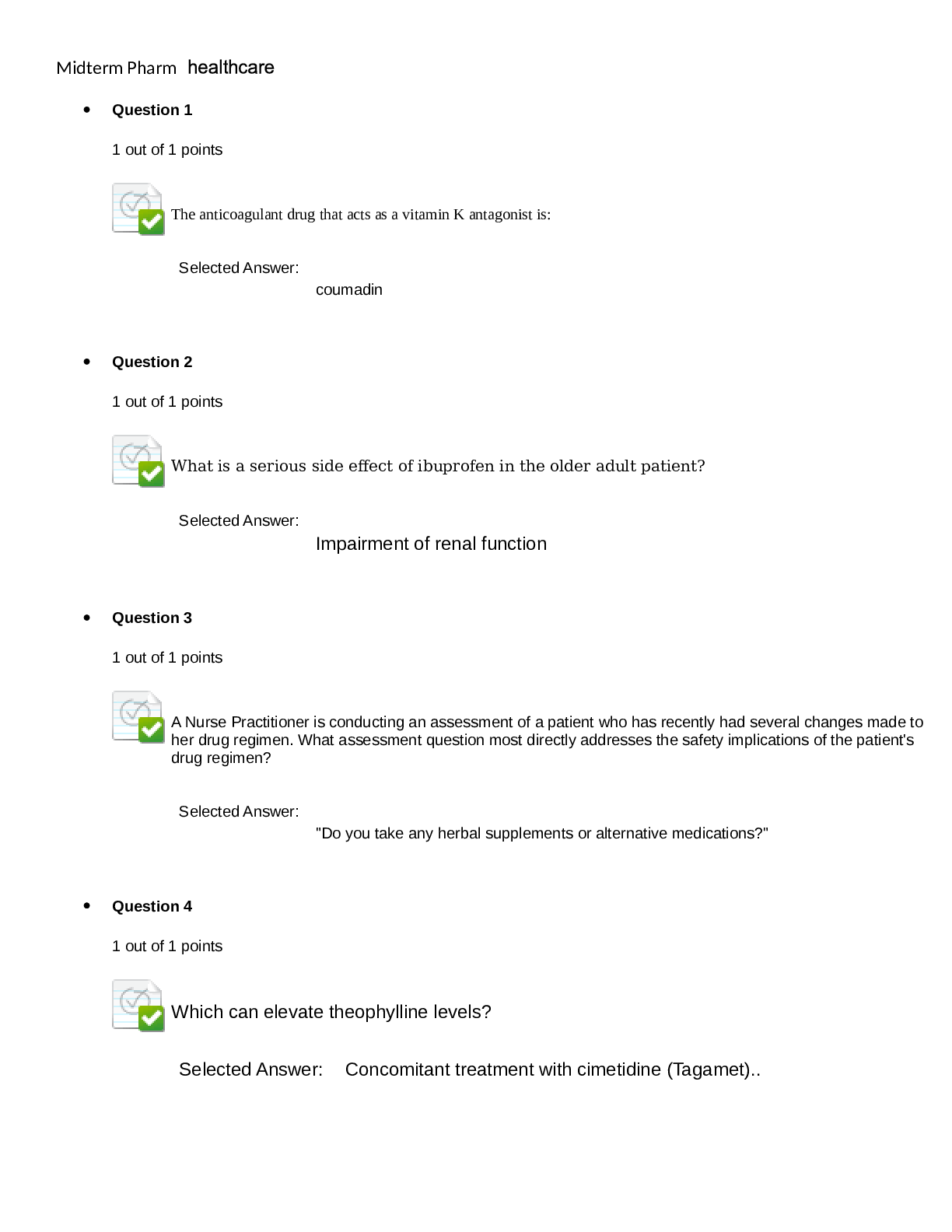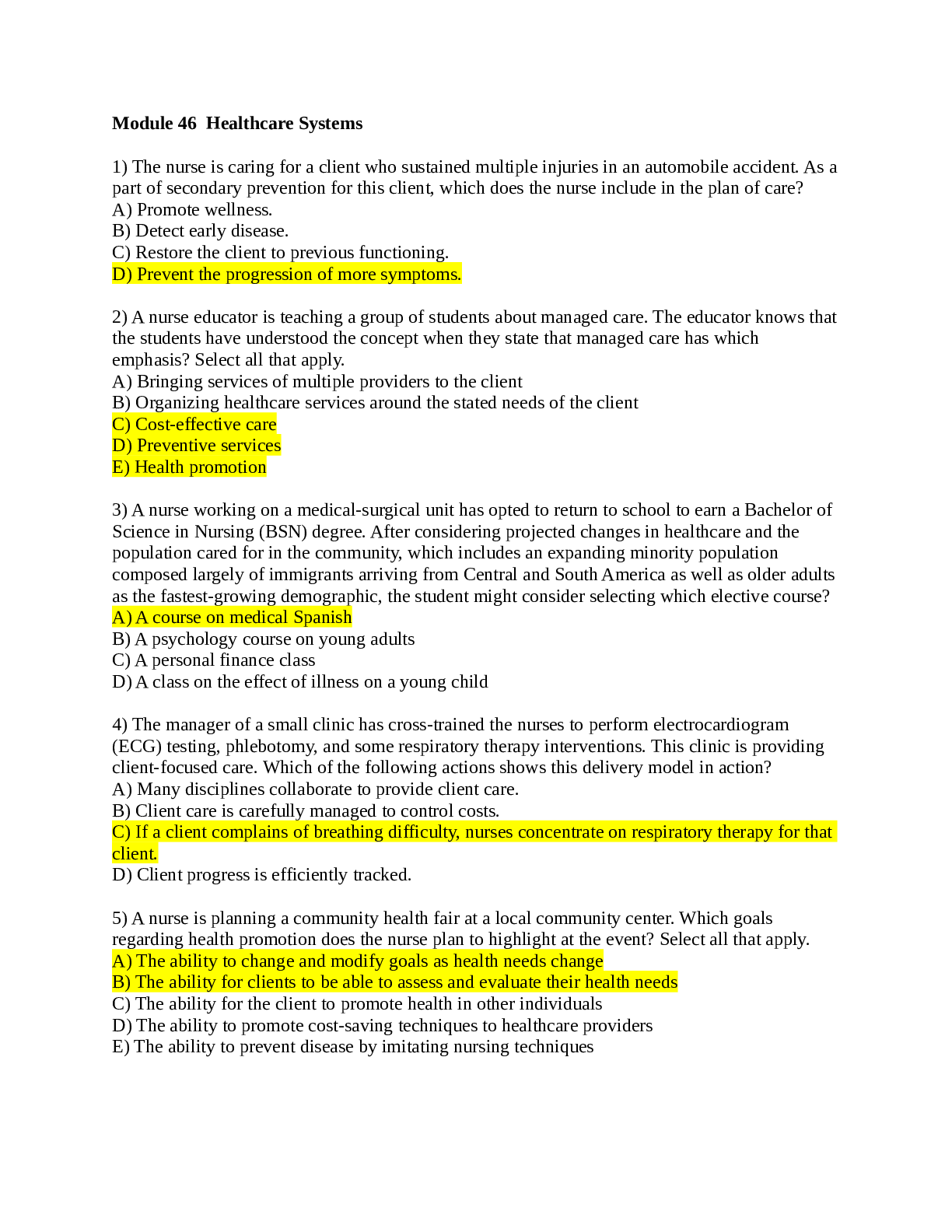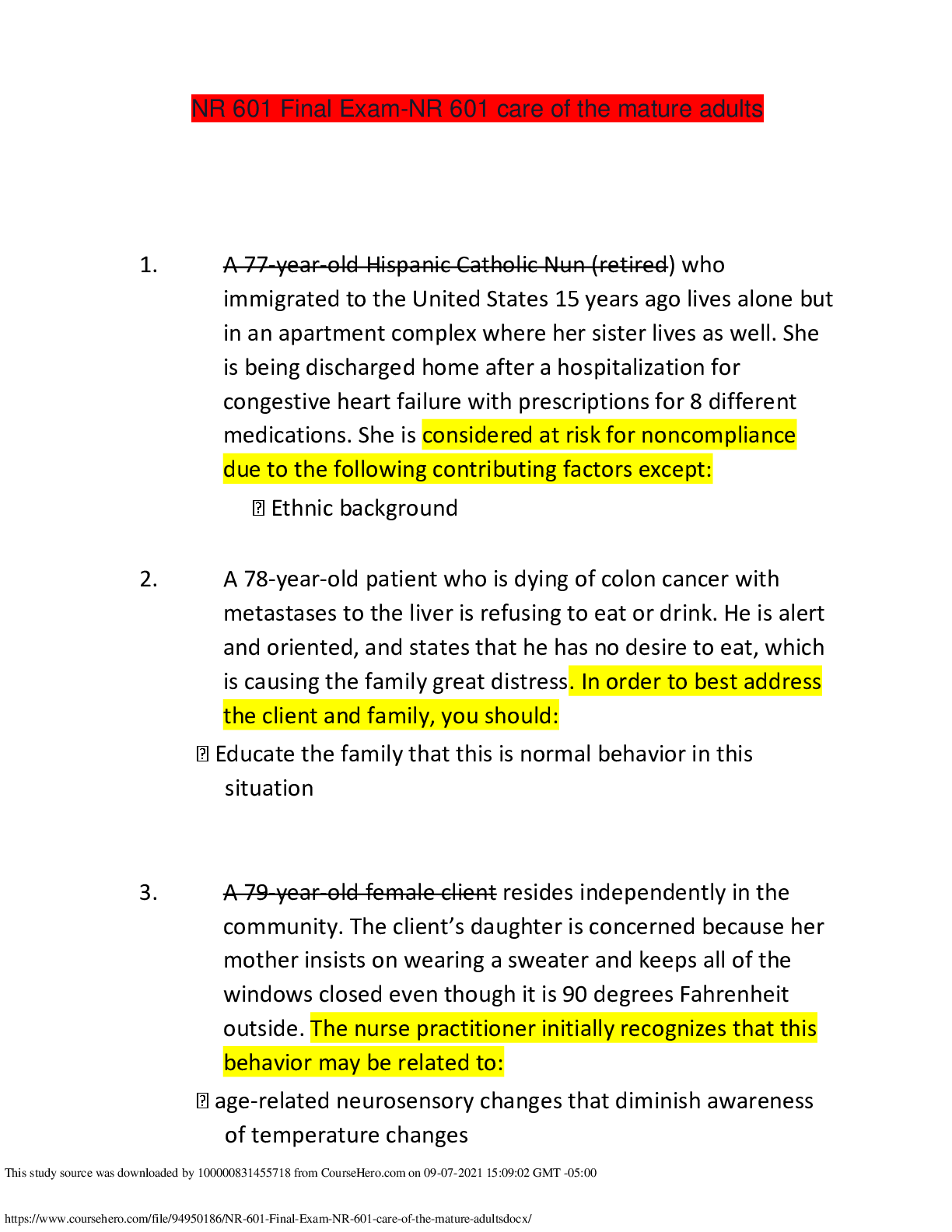*NURSING > EXAM > Test Bank for Medical-Surgical Nursing Critical Thinking in Client Care, 4th Edition Priscilla LeMo (All)
Test Bank for Medical-Surgical Nursing Critical Thinking in Client Care, 4th Edition Priscilla LeMon
Document Content and Description Below
Test Bank for Medical-Surgical Nursing Critical Thinking in Client Care, 4th Edition Priscilla LeMonTest Bank for Medical-Surgical Nursing Critical Thinking in Client Care, 4th Edition Priscilla L... eMon Chapter 1 1. The nurse is caring for four clients on a medical–surgical unit. Which client should the nurse see initially? 1. A client admitted with hepatitis A who has had severe diarrhea for the last 24 hours 2. A client admitted with pneumonia who is has small amounts of yellow productive sputum 3. A client admitted with fever of unknown origin (FUO) who has been without fever for the last 48 hours 4. A client admitted with a wound infection whose WBC is 8,500 mm3 Answer: 1 Rationale: The nurse must decide which client should be seen on the initial rounds of the day. The nurse must remember that the first client to be seen should be the client who needs the attention of the nurse initially. A client with hepatitis A does experience diarrhea, but diarrhea for the last 24 hours could cause the client to have a problem with dehydration and experience a state of fluid volume deficit. Cognitive Level: Application Client Needs: Safe, Effective Care Environment Nursing Process: Planning 2. The nurse is preparing to administer influenza vaccines to a mass drive-through clinic. Which statement by a client would indicate further questioning prior to giving the client the influenza vaccine? 1. “I am allergic to horse hair.” 2. “I try to get my vaccine every year.” 3. “I am not allergic to anything except eggs.” 4. “My husband had a severe allergic reaction after he received his influenza vaccine.” Answer: 3 Rationale: Influenza vaccines are recommended for person at high risk for serious sequelae of influenza. The nurse should be aware that client with a sensitivity to eggs should not receive the vaccine. Vaccines prepared from chicken or duck embryos are contraindicated in clients who are allergic to eggs. Test Bank for Medical-Surgical Nursing Critical Thinking in Client Care, 4th Edition Priscilla LeMon Cognitive Level: Application Client Needs: Safe, Effective Care Environment Nursing Process: Assessment 3. The nurse is caring for four clients on a medical–surgical unit. The secretary gives the nurse the morning labs. Which of the following labs would require that the nurse call the physician and inform the healthcare provider about the client’s abnormalities? 1. WBC 14,600 mm3 2. Serum protein 6.9 g/dL 3. I & D (incision and drainage) showing no growth for the last 24 hours 4. Albumin 4.2 g/dL Answer: 1 Rationale: When the nurse is caring for several clients, all of the labs should be checked frequently throughout the shift to assess for any abnormalities. The WBC in option 1 is abnormal. (Normal WBC 4,000–10,000 mm3 .) All of the other lab results are within acceptable range; therefore, the results should not be called in to the physician. Cognitive Level: Application Client Needs: Physiologic Integrity Nursing Process: Assessment 4. The nurse is orienting a new graduate. The nurse is reinforcing the importance of standard precautions. Which of the following observations by the nurse would require further education regarding standard precautions? 1. The graduate nurse understands to wash hands when entering and exiting the client’s room. 2. The graduate nurse wears gloves when serving breakfast trays to various clients. 3. The graduate nurse wears a gown, gloves, and goggles when suctioning a client. 4. The graduate nurse leaves all supplies in the room of a client who is in contact isolation. Answer: 2 Rationale: The nurse must have an understanding of standard precautions. Prevention is the most important measure to prevent nosocomial infections. Standard precautions were published in 1996 that provide guidelines for the handling of download full file at http://testbankinstant.com blood and other body fluids. These guidelines are used with all clients, regardless of whether they have a known infectious disease. Standard precautions are used by all healthcare workers who have direct contact with clients or with their body fluids. It is not necessary for the nurse to wear gloves while delivering food trays to the client, because there is not contact with the client. Cognitive Level: Application Client Needs: Safe, Effective Care Environment Nursing Process: Evaluation 5. The admitting department alerts the nurse on a medical–surgical unit that a client with active tuberculosis (TB) is being admitted to the unit. Which type of isolation is appropriate based on the client’s diagnosis? 1. Standard precautions 2. Airborne precautions 3. Droplet precautions 4. Contact precautions Answer: 2 [Show More]
Last updated: 2 years ago
Preview 1 out of 326 pages
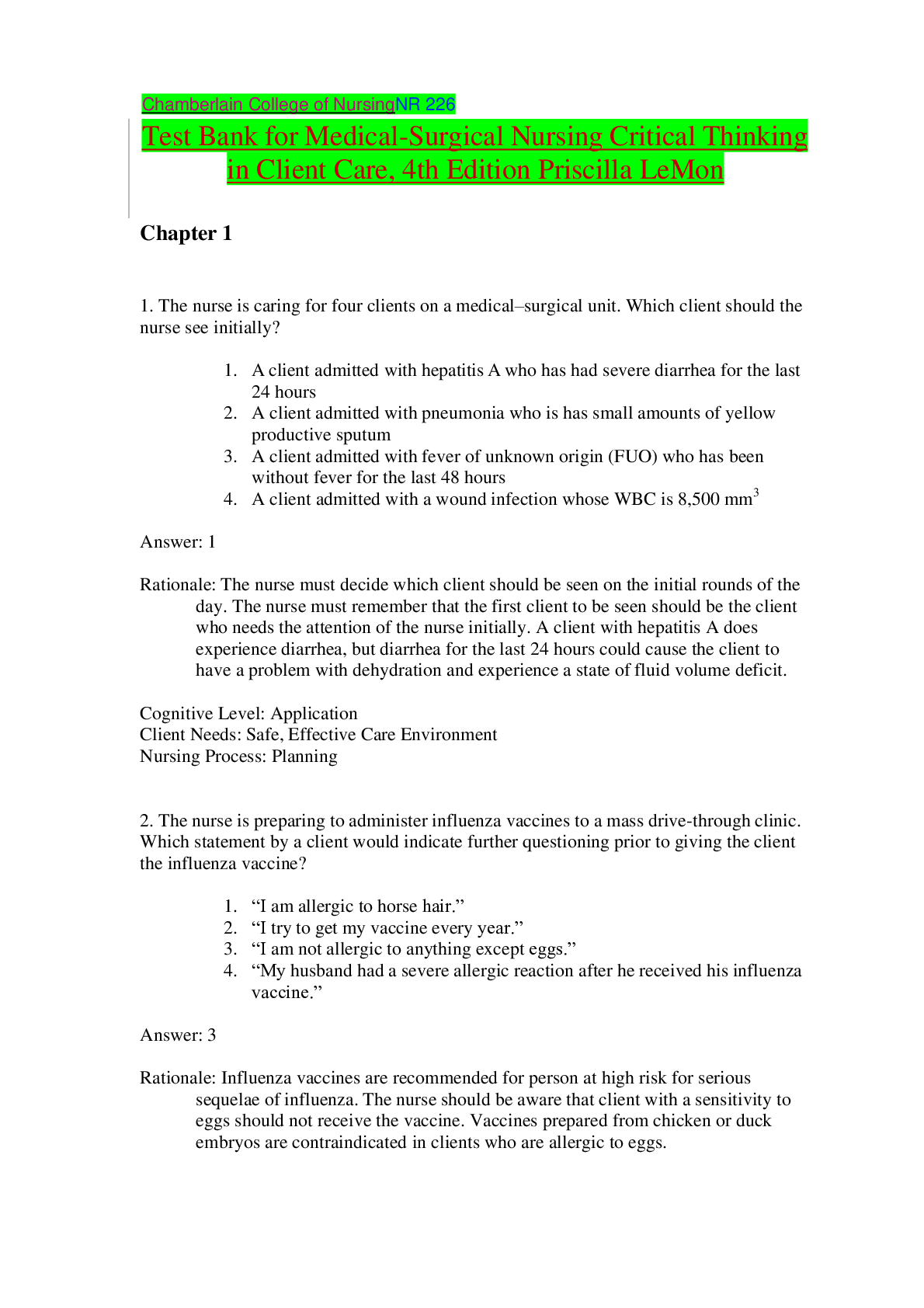
Buy this document to get the full access instantly
Instant Download Access after purchase
Buy NowInstant download
We Accept:

Reviews( 0 )
$19.00
Can't find what you want? Try our AI powered Search
Document information
Connected school, study & course
About the document
Uploaded On
May 01, 2021
Number of pages
326
Written in
Additional information
This document has been written for:
Uploaded
May 01, 2021
Downloads
0
Views
116

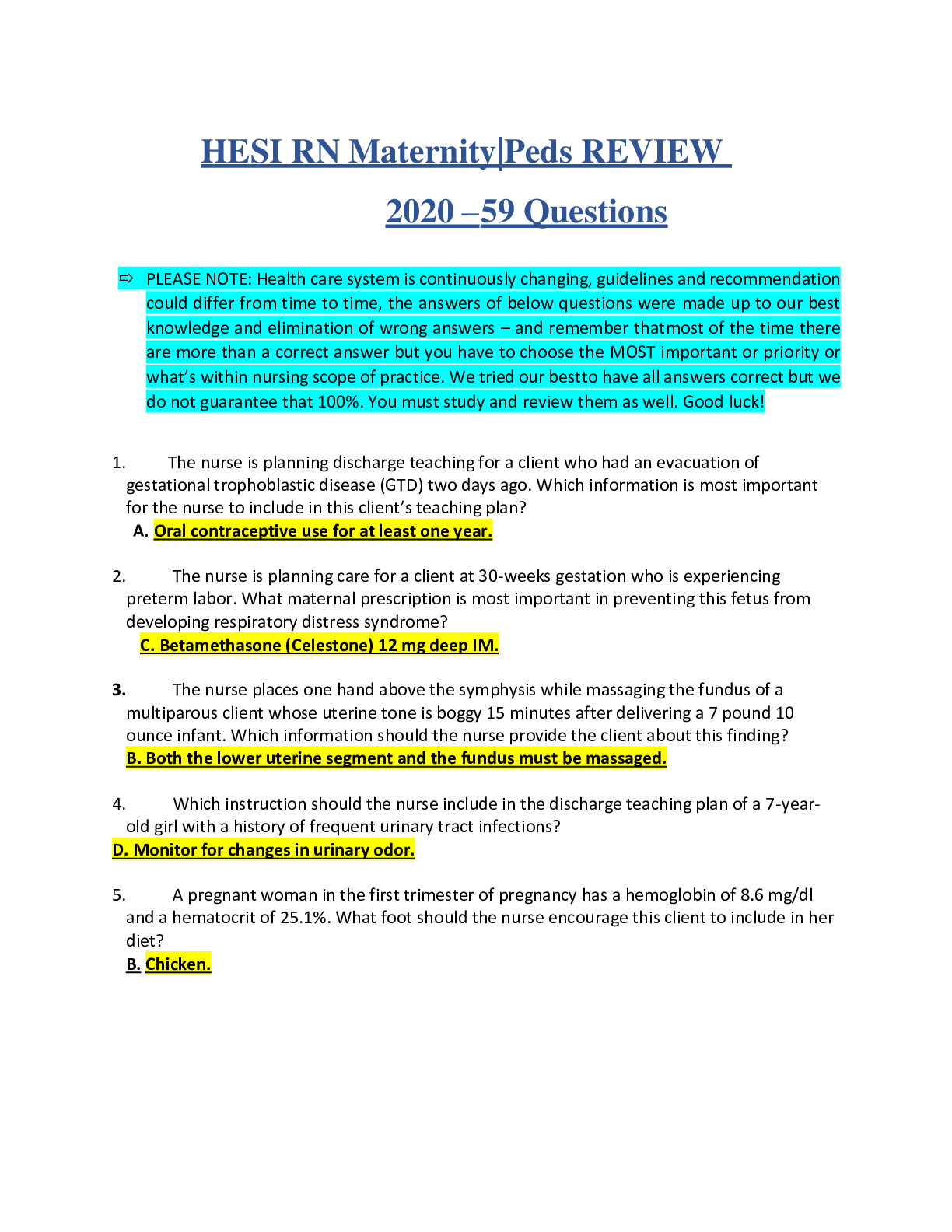
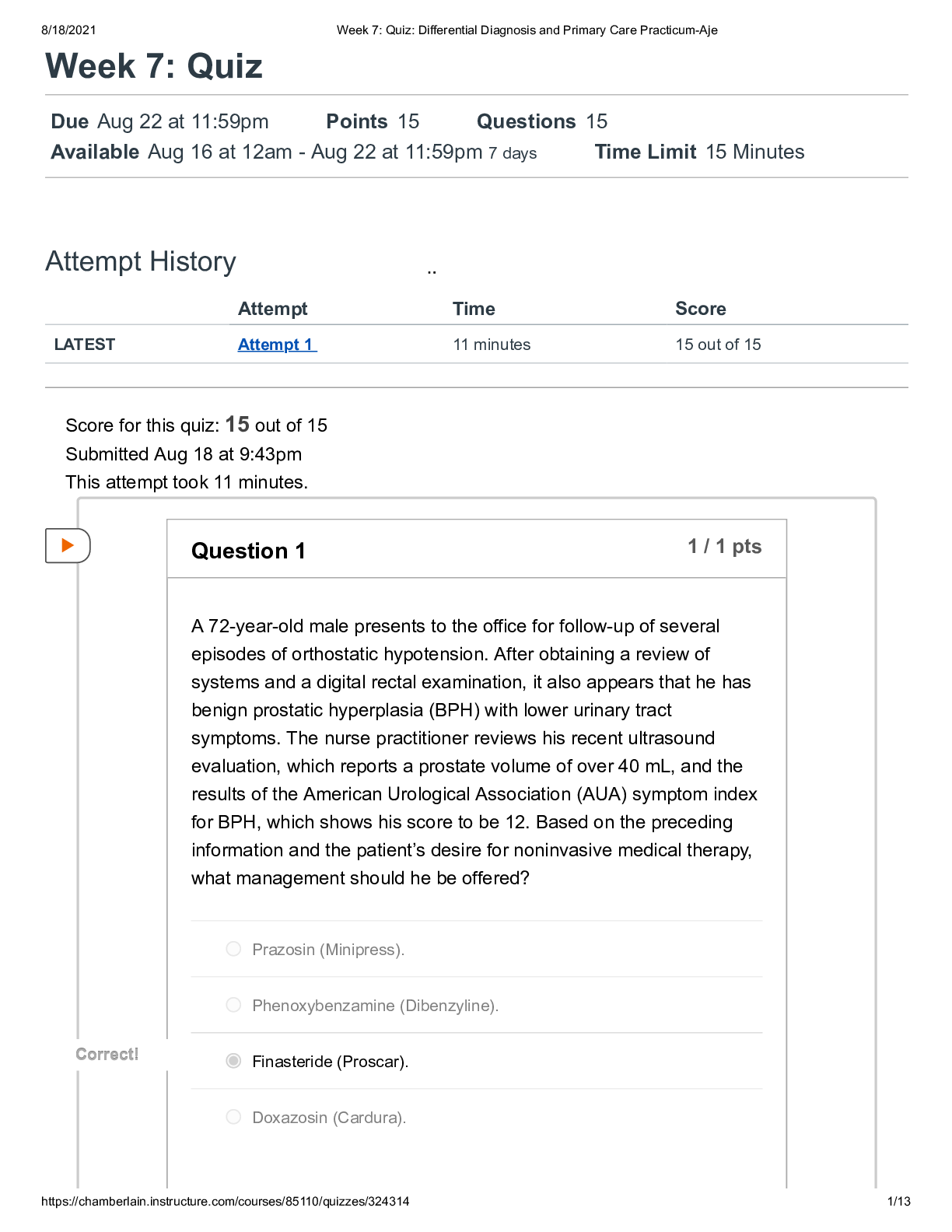
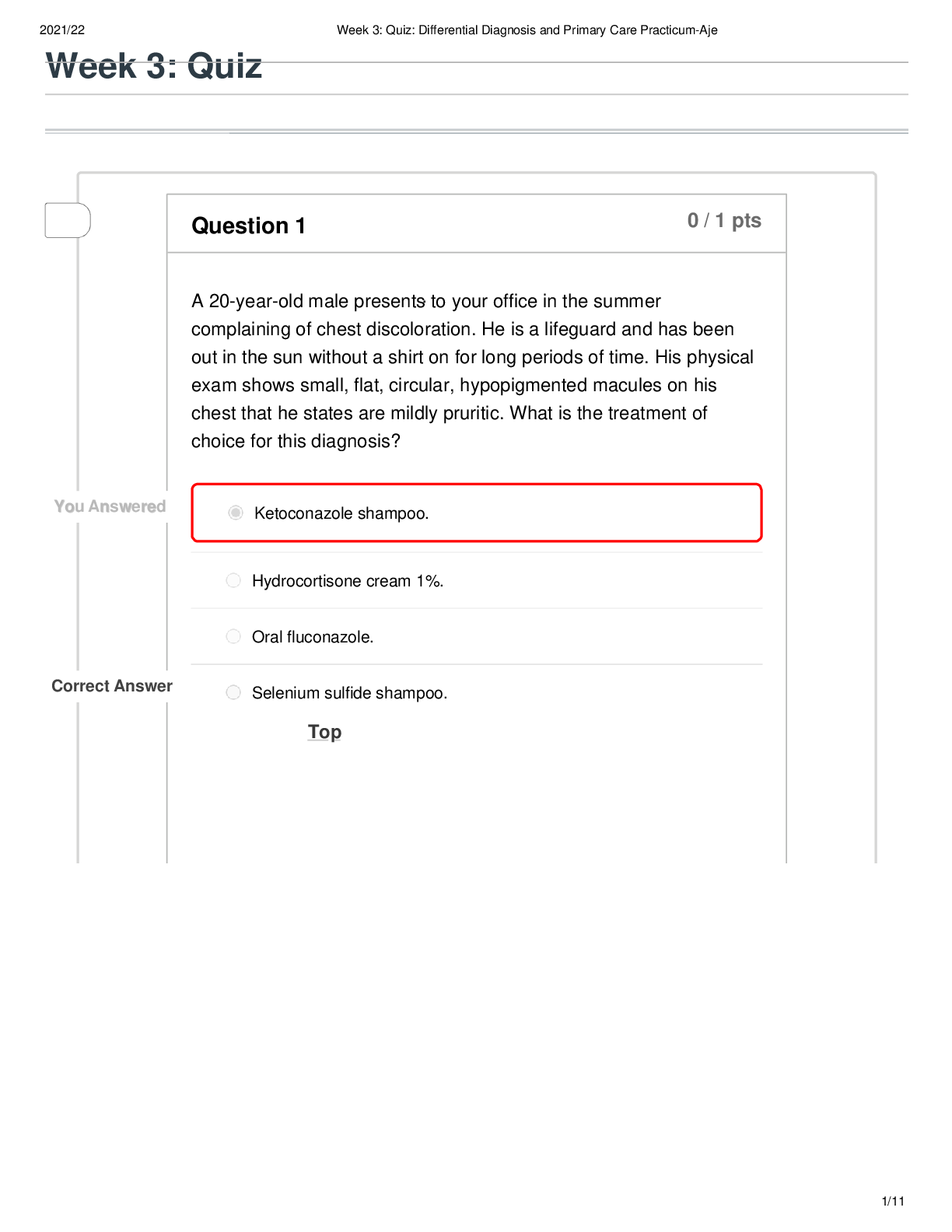
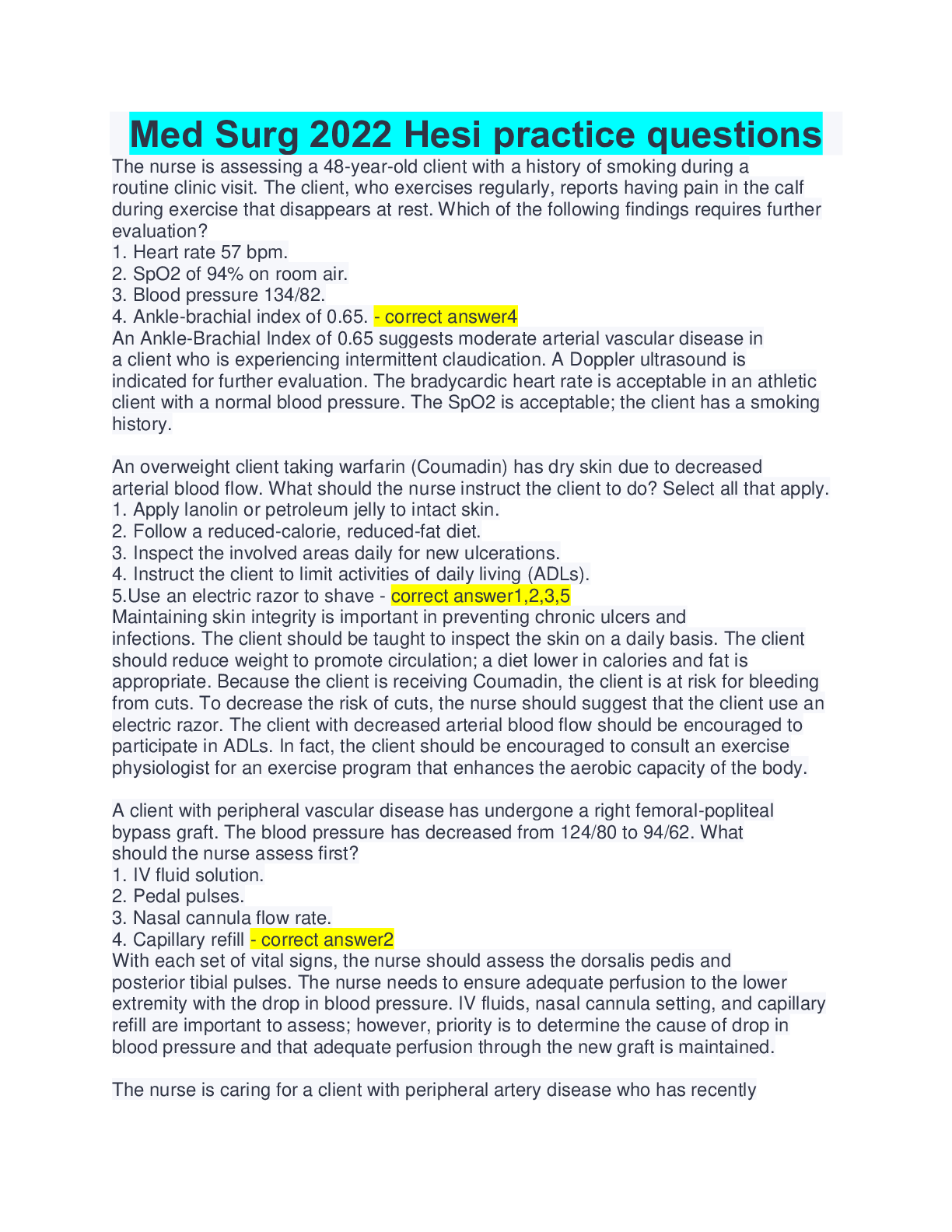
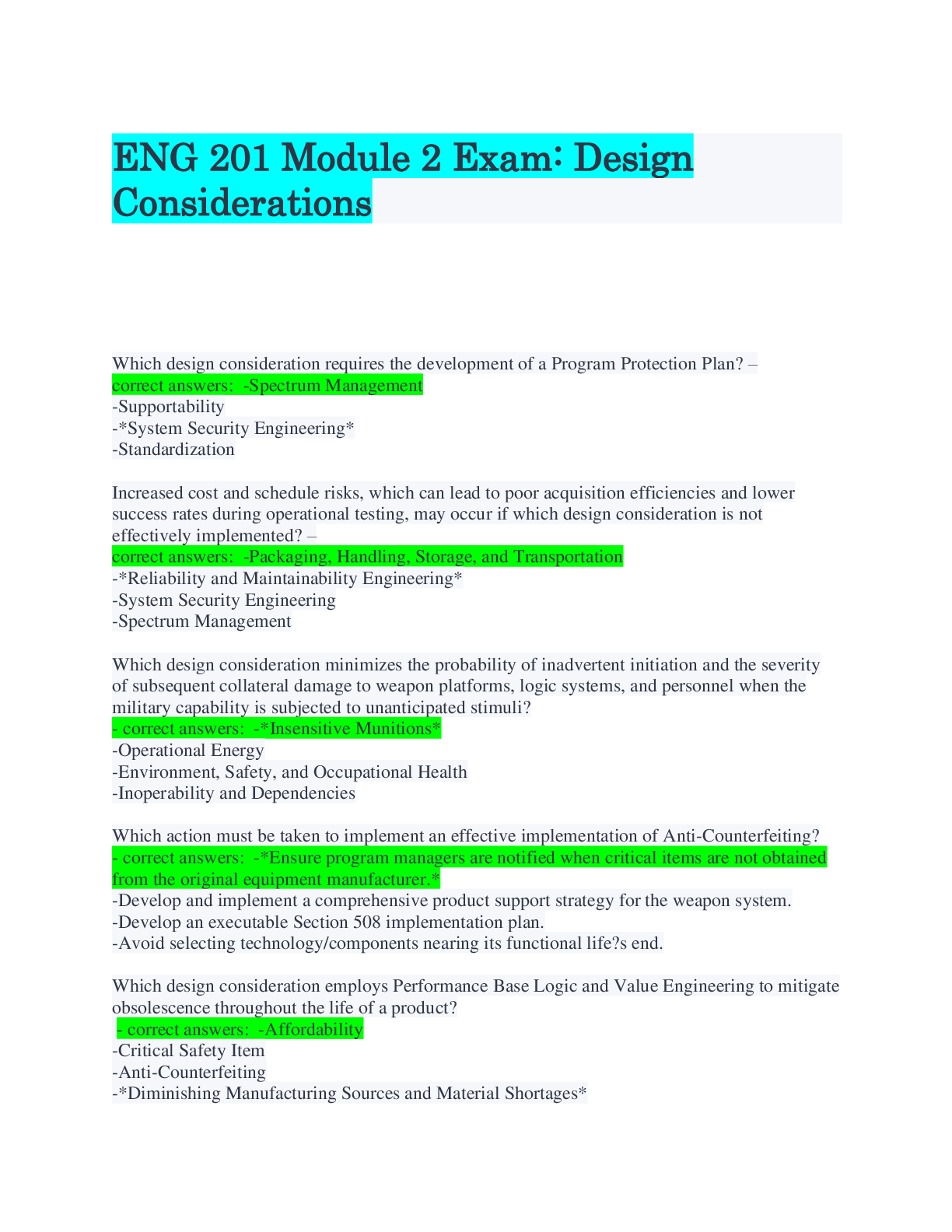
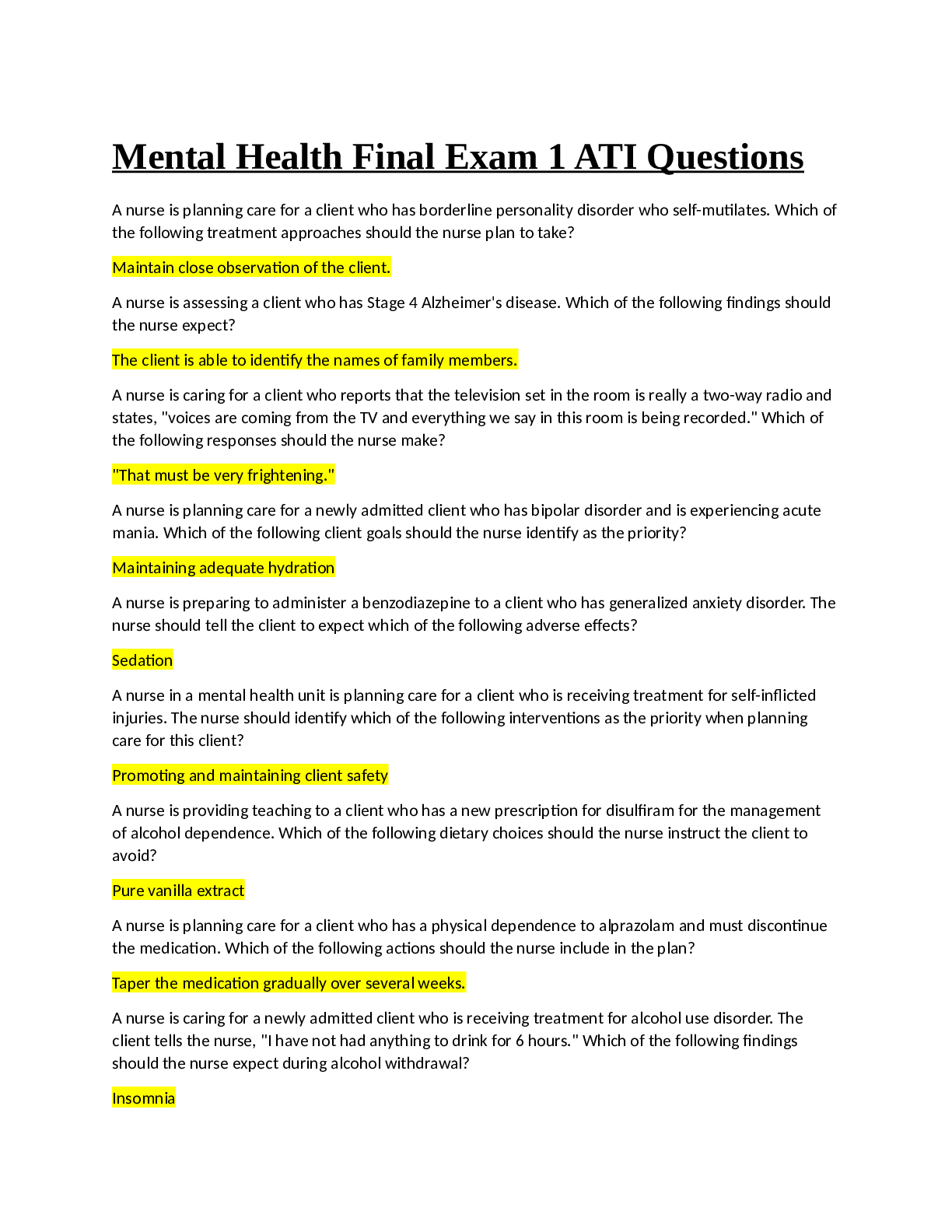
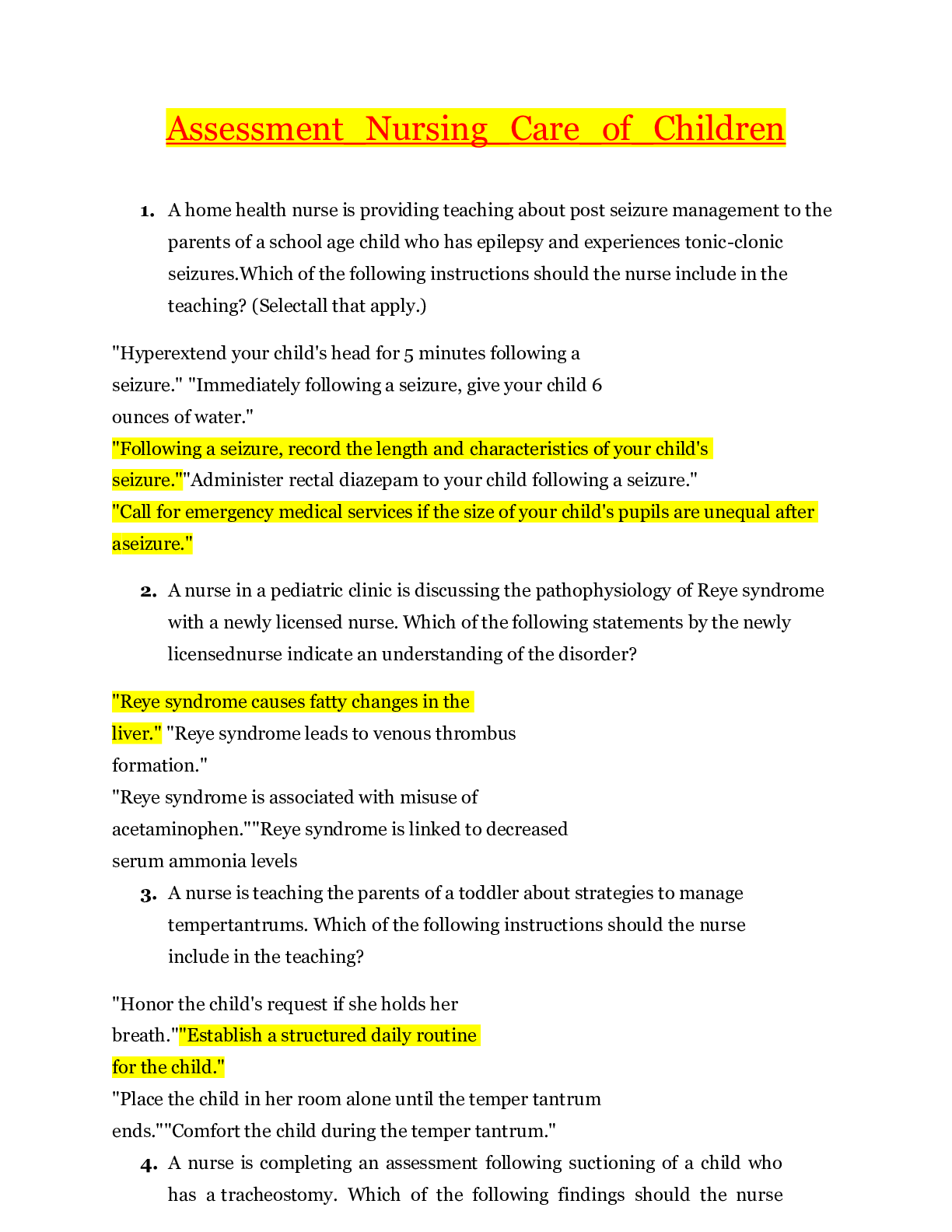

.png)
